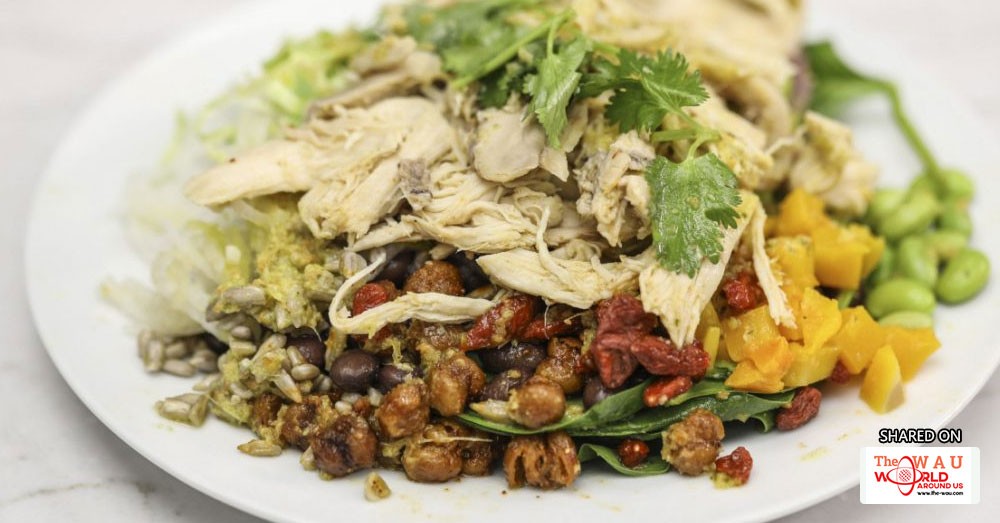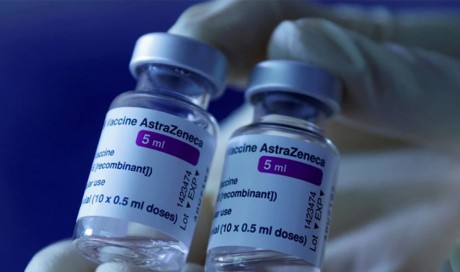A Toronto weight-loss management physician asks the Star to do a nutritional analysis of a salad she often recommends to clients.
This fast-growing mini chain is known for its superb salads and rotisserie chicken. Star reader Sandy -- who also happens to be an obesity doctor -- is curious about its Power Bowl, a hearty salad made up of romaine and spinach, steamed squash, daikon and soy beans, among other nutrition powerhouses. Sandy wants to know whether the bowl is a healthy choice for her clients. We put it to the test. January 22, 2018.
Power Flock, half-portion ($8) with a side of rotisserie chicken ($4)
Flock Rotisserie & Greens, five locations in Toronto
The ask
For Dr. Sandy Van, it’s a constant struggle to find takeout meals that are nutritious, tasty and served in sensible — not supersize — portions.
The weight-management physician helps busy professionals in the downtown core who want to shed pounds and get healthy, something that can be a challenge with long workdays, crammed agendas, stressful commutes, hectic home lives — and a dazzling array of dining choices steps away from their offices.
Even though the best weight-loss strategy is to bring properly portioned food from home, Van knows some of her clients still dine out, especially at lunchtime.

The Power Flock salad is made with romaine and spinach, and is topped with ingredients such as squash, black beans, soy beans, Brussels sprouts, daikon and pickled onions.
The Power Flock salad is made with romaine and spinach, and is topped with ingredients such as squash, black beans, soy beans, Brussels sprouts, daikon and pickled onions.
“A lot of dining options in the downtown core market themselves as healthy, but my clients aren’t always sure if that’s true,” says Van, director of weight management at WellOne Medical Centre. “I’ve been recommending salads from Flock; they are made with good quality, whole food ingredients, you can add protein and get the dressing on the side. Plus, my clients enjoy the taste and don’t feel deprived in any way, which is important for successful weight loss.”
To be sure her takeout recommendation is indeed healthy, Van asked The Dish to find out the nutrition numbers for the Power Flock, a popular salad bowl made with romaine and spinach, squash, marinated black beans, soy beans, shaved Brussels sprouts, daikon and pickled onions, which is all tossed in a carrot/ginger/soy bean/white miso dressing. Crispy chickpeas, goji berries and sunflower seeds ensure it’s a satisfyingly crunchy salad.
Van recommends the half-portion and suggests ordering a side of rotisserie chicken for added protein.
“I always encourage people to bring home-cooked meals but I think — well, I hope! — this salad is a good option for when people really get punched for time.”
The guess
“In total, I suspect it has about 650 calories — without the dressing,” says Van, who even before knowing the nutrition numbers recommended her clients order this salad undressed. “I think it will have fewer than 700 because it has so many vegetables and I don’t think the chicken will do too much damage.
“Still, that’s more calories than what I would recommend for a meal for my patients who are trying to lose weight.”
The exclusive results
For a half-portion of the Power Flock salad with a side of rotisserie chicken:
- Calories: 763
- Fat: 43
- Sodium: 1,219 milligrams
- Carbohydrates: 56 grams
- Protein: 38 grams
The breakdown
The half portion is served in a 475 mL (16 oz) bowl and weighs 530 grams, or slightly more than 1 pound.
Its 1,219 milligrams of sodium is the equivalent of a generous 1/2 teaspoon of salt.
As a comparison (for size, not necessarily taste), this meal is twice the weight and has twice the calories and sodium as Starbucks’ black bean salad bowl, which weighs 270 grams and has 370 calories, 13 grams of fat and 690 milligrams of sodium.
The expert response
“This packs a whole lot of nutrition into a bowl,” says registered dietitian Shannon Crocker, focusing on the salad’s stellar ingredients rather than its calorie-count.
“More than half the plate is vegetables, there is a good mix of plant-based protein with the black beans, soy beans, chickpeas and seeds, and with the added chicken, you’re definitely getting a good bang for your protein buck.”
Nutrition experts recommend people look for meals with between 20 and 30 grams of protein to maximize satiety, she says. “And the fibre from the veggies and beans will also ensure this salad is really satisfying and hunger-curbing.”
As a comparison, Crocker points out that a Big Mac and medium order of fries from McDonald’s has a similar set of nutrition numbers. This fast food combo (no drink) has 760 calories, 37 grams of fat, 1,300 milligrams of sodium, 28 grams of protein and 80 grams of carbohydrates.
“But nutritionally there is no comparison between the two,” she says. “The salad is the easy winner in terms of nutritional value.”
Still, for some people, a 763-calorie salad can be too much food for one meal on a regular basis.
For health-conscious diners and those wanting to lose weight, Crocker suggests ordering the dressing on the side to add sparingly, leaving a portion of the salad for a snack later in the day and (obviously) avoiding the full-size Power Flock.
“You really can get too much of a good thing.”
The restaurant response
Cory Vitiello, executive chef and co-founder of Flock, says the mini-chain of restaurants (there are currently five in the city) will soon provide nutrition numbers for its meals.
“If we are assuring our diners and customers a healthy place to eat, then we need that data,” he says, adding the calorie counts will be posted sometime this spring. “We want to be a more transparent and honest restaurant and give people the information they need to make good choices.”
And, he adds, nutrition numbers help him figure out where to make healthy changes in Flock’s meals.
How does The Dish’s analysis of the Power Flock compare to Vitiello’s nutrition numbers?
“The only variance we see is somebody over-portioned the dressing in your salad,” he says. “The sodium number is up by 30 per cent and the fats are up by 20 per cent. We will be working on our portioning.”
Otherwise, Vitiello is happy with the nutrition numbers — and with the salad itself.
“It’s a big, powerful salad full of good fats, good proteins, good carbohydrates,” he says. “It’s going to energize you through the day.”
The reader reaction
For her clients’ sakes, Van would have preferred the half-portion to clock in closer to 600 calories.
Still, she adds, it’s the quality of the calories that matter.
“What I like about the dish as a takeout option, it has a focus on vegetables, fibre, healthy fats and protein and this dish encompasses that constellation of what I find to be a balanced meal.”
The Dish is a regular series that helps health-conscious diners navigate Toronto’s food scene by revealing the nutrition information of Star readers’ favourite foods. If you are curious about the calories in a meal or treat, email Megan Ogilvie at [email protected]. Items selected to be featured in The Dish will be sent to an accredited laboratory for nutritional analysis.
Share This Post












